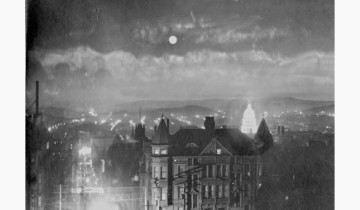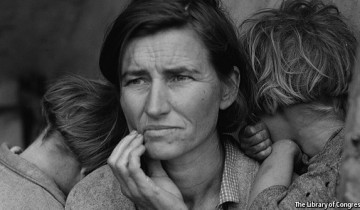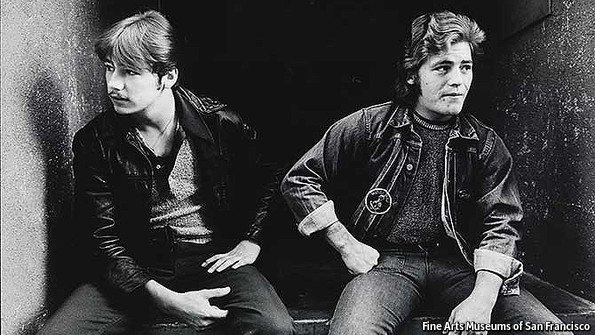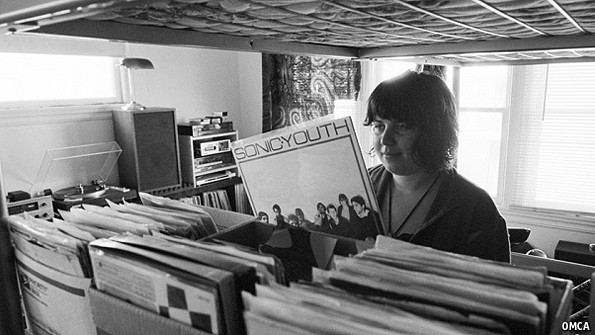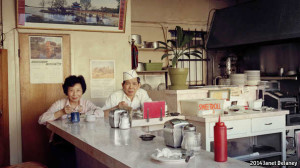 For the ECONOMIST: IN 1978 Janet Delaney was a photography student at the San Francisco Art Institute who had spent six months travelling through Guatemala, Nicaragua and El Salvador, taking photographs and interviewing people about the impact of civil war there. On her return to San Francisco she moved into an apartment on Langton Street, not far from city hall and downtown, in an area known as South of Market. One night she saw that a famous residential hotel was being demolished, and knowing that dozens of poor and elderly residents had been displaced, she began taking pictures.
For the ECONOMIST: IN 1978 Janet Delaney was a photography student at the San Francisco Art Institute who had spent six months travelling through Guatemala, Nicaragua and El Salvador, taking photographs and interviewing people about the impact of civil war there. On her return to San Francisco she moved into an apartment on Langton Street, not far from city hall and downtown, in an area known as South of Market. One night she saw that a famous residential hotel was being demolished, and knowing that dozens of poor and elderly residents had been displaced, she began taking pictures.
And thus began a new project for Ms Delaney: documenting the transformation of her neighbourhood. An area populated largely by small-business owners, blue-collar workers, families, artists and members of the gay and lesbian community, it had been targeted by the city for significant urban renewal and redevelopment.
The themes of Ms Delaney’s work still resonate loudly in 2015 as the demand for housing in San Francisco outstrips supply. In response to the most recent tech boom and the issues of gentrification and displacement facing San Francisco yet again, the de Young museum is hosting an exhibit of Ms Delaney’s South of Market photographs. A book of her work was published in December 2013.
“The intention of the show is to create a conversation about how cities change over time,” says Ms Delaney. “By looking back we can consider what was lost and what has been gained.”
Some of the more than 40 photographs in the exhibition depict quiet moments of everyday life: early-morning sunshine seen from a kitchen window; a woman sweeping the front lobby of a residential hotel; a man getting coffee at a diner; the local barber. Others show more evidence of tumult: a man and his son standing outside a building from which they have just been evicted as workers re-paint it for new tenants; a kitchen charred from an arson fire; a hand-written sign that reads, “Attention vandals, if you don’t want to be shot stay away from this street.”
Murals, furniture-supply warehouses, news stands, hotel cafés, car workshops, homeless men sleeping in a small park, artists in their studios, and a casket company are all included. Other photos show precisely what the city’s redevelopment efforts looked like at that time: construction workers help build the Moscone Center, a large convention site still active today. Photos taken on high from nearby buildings show the project’s immensity.
Also displayed are flyers for town-hall meetings, and other documents of the era, including a letter Ms Delaney sent to the Democrat mayor, Dianne Feinstein (now a senator), in 1981, urging her to learn more about the “critical shift in character” of the South of Market area. “People with more money were moving into a neighbourhood where people had lived who were just getting by,” says Ms Delaney.
Placards provide quotes from the many residents whom Ms Delaney interviewed at the time. Approaching them as “neighbours first, subjects second”, Ms Delaney asked about their lives in South of Market, and how redevelopment was affecting them. “Every Friday they’d dress up and they weren’t going any farther than around the corner,” said a resident named Bobby Washington. “We used to sneak in and watch our mothers in there dancing.” A musician named Perry Lancaster, who could just as easily be talking about conditions in San Francisco today, tells Ms Delaney, “The landlord, in the next month or so, could say you gotta leave. And then more than likely I’ll have to move to Oakland because I can’t afford a space in San Francisco.”
Other anecdotes have a harsher tone: the head of San Francisco’s redevelopment agency at the time is quoted as saying that the South of Market neighbourhood was “too valuable to permit poor people to park on it.”
Ms Delaney exhibited some of her South of Market work in the 1980s, but most remained in her studio. She now lectures in visual studies at University of California, Berkeley, and is a visiting artist at the San Francisco Art Institute. “Will San Francisco become an ‘everycity’, homogenised by big box stores and chain restaurants?” she wonders. “That is an extreme scenario, but when you look at San Francisco in the 1980s and you look again now, it is not so far off.”
“Janet Delaney: South of Market” is at the de Young Museum in San Francisco until July 19th.
Image by Janet Delaney.
